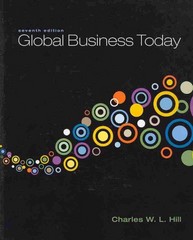
7. (17.5%) Take the real intertemporal model with investment presented in class (with all its auxiliary assumptions). The government receives a transfer from the rest of the world and uses it to subsidize investment in capital. Since the subsidy is financed with a transfer from abroad it leaves unchanged the initial levels of government expenditure and taxes for the first and the second periods of the model (that are constant and positive). Specifically, for each dollar a firm invests in the current period, the government rebates to the firm s >0 cents in the second period. As always let's restrict our analysis to the current period a) Derive the optimal investment rule in the presence of the subsidy. Explain the effects of different exogenous variables, including the subsidy, on investment demand. b) Trace the macroeconomic response of this economy after the introduction of the subsidy using the graphs for the labor market and the goods market. Discuss the adjustment of the economy. Specifically, what are the effects on output, employment, wages and the interest rate? c) What are the effects on consumption and investment? d) If the government only cares about (current) consumer welfare will it pursue such a policy? Why? e) Assuming the government can't change the path of its expenditures but still cares about (current) consumer's welfare what will be a better use for the transfer received from abroad? Why? 7. (17.5%) Take the real intertemporal model with investment presented in class (with all its auxiliary assumptions). The government receives a transfer from the rest of the world and uses it to subsidize investment in capital. Since the subsidy is financed with a transfer from abroad it leaves unchanged the initial levels of government expenditure and taxes for the first and the second periods of the model (that are constant and positive). Specifically, for each dollar a firm invests in the current period, the government rebates to the firm s >0 cents in the second period. As always let's restrict our analysis to the current period a) Derive the optimal investment rule in the presence of the subsidy. Explain the effects of different exogenous variables, including the subsidy, on investment demand. b) Trace the macroeconomic response of this economy after the introduction of the subsidy using the graphs for the labor market and the goods market. Discuss the adjustment of the economy. Specifically, what are the effects on output, employment, wages and the interest rate? c) What are the effects on consumption and investment? d) If the government only cares about (current) consumer welfare will it pursue such a policy? Why? e) Assuming the government can't change the path of its expenditures but still cares about (current) consumer's welfare what will be a better use for the transfer received from abroad? Why







